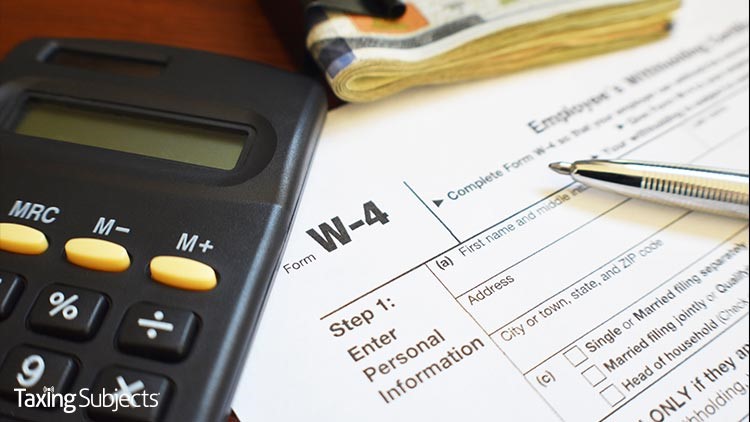
by | May 10, 2022 | Tax Tips and News
With 2020’s extended tax deadlines due to the coronavirus pandemic, it seems like we just wrapped up the previous tax season. But believe it or not, the next filing season kicks off Jan. 1, 2021.
The Internal Revenue Service is encouraging taxpayers to begin organizing their tax-related documents now, to avoid confusion later on. The IRS has even put together a special web page that outlines the steps that taxpayers can take now to prepare for the 2021 filing season.
Make filing easier in ‘21.
The first step toward filing, of course is to gather the necessary paperwork or electronic files that every taxpayer needs to file. Forms W-2, Wage and Tax Statement; Forms 1099-MISC, Miscellaneous Income; and other income documents help determine if the taxpayer is eligible for deductions or credits.
They’ll also need their Notice 1444, Economic Impact Payment, to calculate any Recovery Rebate Credit they may be eligible for on their 2020 federal income tax return.
The best rule of thumb is that most income is taxable, including unemployment compensation, refund interest and income from the gig economy and virtual currencies.
Taxpayers with an Individual Taxpayer Identification Number (ITIN) should ensure it hasn’t expired before they file their 2020 tax return. If it has expired, the IRS recommends they submit a Form W-7, Application for IRS Individual Identification Number, now to renew their ITIN.
Taxpayers who fail to renew an ITIN before filing a tax return next year could face a delayed refund and could even be ineligible for certain tax credits.
Also on the income side, taxpayers can use the Tax Withholding Estimator on IRS.gov to help calculate the right amount of tax to have withheld from their paychecks. If they need to adjust withholding for the remainder of the year, time is running out. It’s best to submit a new Form W-4, Employee’s Withholding Certificate, to their employer as soon as possible.
Those who received non-wage income like self-employment income, investment income, taxable Social Security benefits, and in some instances, pension and annuity income, may have to make estimated tax payments.
Payment options can be found at IRS.gov/payments.
No EIP? Check into the Recovery Rebate Credit!
Taxpayers may be able to claim the Recovery Rebate Credit if they met the eligibility criteria in 2020 and:
- They didn’t receive an Economic Impact Payment this year, or
- Their Economic Impact Payment was less than $1,200 ($2,400 if married filing jointly for 2019 or 2018) plus $500 for each qualifying child.
- For additional information about the Economic Impact Payment, taxpayers can visit the Economic Impact Payment Information Center.
Interest on a refund is taxable.
Taxpayers who got a federal tax refund in 2020 may have been paid interest. The IRS sent interest payments to individual taxpayers who timely filed their 2019 federal income tax returns and received refunds. Most interest payments were received separately from tax refunds.
Interest payments are taxable and must be reported on 2020 federal income tax returns. In January 2021, the IRS will send a Form 1099-INT, Interest Income, to anyone who received interest totaling at least $10.
Although the IRS issues most refunds in less than 21 days, the IRS cautions taxpayers not to rely on receiving a 2020 federal tax refund by a certain date, especially when making major purchases or paying bills. Some returns may require additional review and may take longer.
Some Refunds Not Available Until March
By law, the IRS can’t issue refunds for people claiming the Earned Income Tax Credit (EITC) or Additional Child Tax Credit (ACTC) before the middle of February. The law requires the IRS to hold the entire refund – even the portion not associated with either the EITC or ACTC.
The IRS expects most refunds related to these two credits to be available in taxpayer bank accounts or on debit cards by the first week of March if they chose direct deposit and there aren’t any other issues with their tax return.
Taxpayers should use the Where’s My Refund? online tool to track their refund payment.
Stay home and stay safe with IRS online tools.
Taxpayers can find online tools and resources to help get the information they need. These IRS.gov tools are easy-to-use and available 24 hours a day. Millions of people use them to find information about their accounts, get answers to tax questions or file and pay their taxes.
Taxpayers also have several options to find a tax preparer. One resource is Choosing a Tax Professional, which offers a wealth of information for selecting a tax professional.
The Directory of Federal Tax Return Preparers with Credentials and Select Qualifications can help taxpayers find preparers in their area who currently hold professional credentials recognized by the IRS, or who hold an Annual Filing Season Program Record of Completion.
Source: IR-2020-256
– Story provided by TaxingSubjects.com

by | May 10, 2022 | Tax Tips and News
We’ve all been there before: We got a new job, and on the first day, our new boss puts a Form W-4 on our desk and tells us to fill it out for withholding.
It takes a bit of math and what feels like a good helping of guesswork to figure out just how much tax we need to withhold from a paycheck. Too little, and we could owe a hefty sum when we file; too much, and the IRS hangs onto it until we get a tax refund. Luckily, the Internal Revenue Service has an online tool that can help taxpayers determine how much they need to withhold.
The Tax Withholding Estimator on IRS.gov does just what it says: help taxpayers determine whether their employer is withholding enough tax or if they need to fill out a new Form W-4. The tool is available for regular employees, but also for retirees, self-employed taxpayers and others—virtually anyone who gets a regular paycheck.
With just three easy steps, the clouds of uncertainty can begin to clear.
Step One: Gather Documents
This first step should be completed before taxpayers bring up the Estimator. Users will need a copy of their most-recent pay stub and tax return. Once those items are in hand, the user can go online and use the Tax Withholding Estimator on IRS.gov.
Users should read all the information and directions presented there. To move on, click the blue Tax Withholding Estimator button.
Step Two: Answer Questions
Once they’re done with the opening information, users get down to giving the tool with the information needed to come up with the correct withholding amount. This is done by merely answering the questions posed on-screen about the user’s tax situation.
As the user completes a section, clicking the blue Next button sends them to the next step.
Step Three: Review Results
The Estimator helps users aim for a tax-due amount that’s close to zero—or a refund.
Depending on the information given by the user, the tool may deliver a recommendation to submit a new Form W-4, Employee’s Withholding Allowance Certificate. The W-4 goes to the employer, not the IRS, and is used to change the amount withheld each pay period.
Many times, employers use an online method for making changes in withholding, so workers should check with their employers before filling out a paper form.
Taxpayers who get a pension can use their results to fill in a Form W-4P, which goes to the payer.
Source: What taxpayers need know about using the IRS Tax Withholding Estimator.
– Story provided by TaxingSubjects.com

by | Apr 2, 2022 | Tax Tips and News
Taxpayers with foreign bank or financial accounts are being reminded that time is running out to file the yearly report of their holdings.
The annual Report of Foreign Bank and Financial Accounts (FBAR) is due on Oct. 15.
The deadline applies to any U.S. citizens, resident aliens or any domestic legal entity holding bank or other financial accounts outside the country.
Originally, the deadline for filing the FBAR was April 15 of this year, but late filers got an automatic extension to file until Oct. 15.
Taxpayers did not have to request the extension.
However, those taxpayers who live in a federally designated disaster area—such as a location hit by a hurricane or tornado—may have their FBAR filing date delayed even further, but should consult the latest FBAR Relief Notices for information specific to their area.
Who should file?
Taxpayers are required by the Bank Secrecy Act to file an FBAR if:
- The taxpayer has a financial interest in, signature authority or other authority over one or more accounts, such as a bank or brokerage account, mutual fund or other financial account located outside the United States, and
- The aggregate value of all their foreign financial accounts exceeds $10,000 at any time during the calendar year.
The Internal Revenue Service wants all U.S. persons or entities who have foreign accounts—even relatively small ones—to see if the filing requirements apply to them.
The IRS defines a “U.S. person” as a citizen or resident of the U.S. This definition also encompasses domestic legal entities, including partnerships, corporations, limited liability companies, estates and trusts.
Filing the FBAR has to be done electronically with the Financial Crimes Enforcement Network, known as FinCEN. Taxpayers are required to use the BSA E-Filing System website to file their FBAR. The report should not be filed with a federal income tax return.
If taxpayers cannot e-file their FBAR, they should call FinCEN at 800-949-2732; taxpayers calling from outside the U.S. should call 703-905-3975.
Simply not filing an FBAR should not be considered an option when the report is required. Those who attempt to avoid filing could face considerable civil and criminal penalties – including fines and prison time.
However, the IRS says it will not penalize a taxpayer who reported an account properly on a late-filed FBAR, if the agency finds a reasonable cause for the missed deadline.
For more information on the FBAR and filing the report, see these resources:
Source: IR-2021-196
– Story provided by TaxingSubjects.com

by | Apr 2, 2022 | Tax Tips and News
Millions of families have been receiving monthly advance payments of the Child Tax Credit. Provided by the American Rescue Plan that was passed earlier this year, these payments have been going to eligible households since July.
As with any tax-related change, taxpayers have understandably had questions. While the “Advance Child Tax Credit Payments in 2021” page on IRS.gov aggregates answers to many frequently asked questions, the Internal Revenue Service this week clarified how child custody can affect the payments—from shared custody to alternating custody arrangements.
How does custody affect eligibility for the Advance Child Tax Credit?
The IRS based eligibility for the Advance Child Tax Credit on the most recently filed tax return. That’s because these advance payments are for tax year 2021, and—obviously—taxpayers won’t file this year’s return until 2022.
Whichever parent claimed the qualifying child (or children) on the most recently filed return has, in all likelihood, already been receiving payments for the past few months. While that seems cut and dry, the situation gets tricky when parents alternate custody for the purposes of claiming the Child Tax Credit. This can result in the parent who claimed a child for TY2020 receiving payments that should—according to their arrangement—go to the other parent.
Taxpayers who receive payments but are ineligible could be on the hook for a pretty big tax bill in 2022. The IRS says the first step these parents should take is unenrolling for payments on the Child Tax Credit Update Portal. However, the IRS notes that “if their custody situation changes and they are entitled to the child tax credit for 2021, they can claim the full amount when they file their tax return next year.”
To read the full press release, check out the source link below.
Source: COVID Tax Tip 2021-147
– Story provided by TaxingSubjects.com

by | Apr 2, 2022 | Tax Tips and News
The last part of the year is traditionally a good time for taxpayers to check their withholding levels for the upcoming new year. That’s why the Internal Revenue Service recently issued a friendly reminder.
With 2021 going by like a runaway train, it’s easy to just let withholdings slide, thinking what worked this year will work next year.
That, however, may not necessarily be the best strategy. Life is full of unexpected turns; marriage, divorce, a new child or the purchase of a home can all be really good reasons to refigure withholding.
Checking withholding is easy; the IRS has a Tax Withholding Estimator that helps taxpayers decide if they have too much or too little withheld, and how to make a tweak to put more money in their pocket instead of the pockets of the IRS.
The Estimator can also be used to help taxpayers see if they should withhold more or should make an estimated tax payment to avoid a big bill for tax due when they file next year.
The IRS reminds that the Withholding Estimator can also be very helpful to retirees, self-employed taxpayers and others, giving them a step-by-step tool that can tailor the amount of income tax being withheld from wages and pension payments to the actual tax owed.
Points to ponder for 2021
The Internal Revenue Service says there are things to consider when adjusting withholding for 2021:
Income taxes are “pay as you go”
Whether they’re withheld from a paycheck, paid as quarterly estimated tax payments, or a little of both, taxes are generally paid year-round. The IRS, however, figures that about 70% of all taxpayers withhold too much from their income for taxes. This results in a refund at tax time; in 2021, the average refund was more than $2,700.
Taxpayers who need to pay their taxes have some options on just how to send the payment to the Internal Revenue Service. One of the easiest options is to use the IRS2Go app, which allows users to schedule payments for future dates. The feature is handy for payment plan installments, estimated tax payments, or to pay taxes during filing season.
Other options for payment include connecting by phone or going online.
The taxpayer’s online account is a powerful tool that can help keep the taxpayer informed on a number of details surrounding their tax picture:
- The amount of taxes they owe;
- Payment plan details and options;
- The last 5 years of their tax payment history;
- Scheduled or pending tax payments; and
- Key information from their most recent tax return.
Taxpayers can sign into their online account at IRS.gov/account.
More information about taxes, estimated taxes and withholding can be found at Tax Withholding on the IRS website, IRS.gov.
Source: IR-2021-199
– Story provided by TaxingSubjects.com

by | Apr 2, 2022 | Tax Tips and News
Millions of American families have been taking advantage of the advance payments of the Child Tax Credit, but the Internal Revenue Service stresses there’s still time left to sign up for the remaining payments.
The latest batch of the monthly advance payments is now making its way into the bank accounts of some 36 million families. This wave of payments totals around $15 billion and the vast majority of families are getting their payments by direct deposit.
The advance payments of the Child Tax Credit (CTC) were made possible by the American Rescue Plan, passed earlier this year. It allowed qualifying families to get their CTC payments in advance installments, rather than just a refund when they file their income taxes.
Families can qualify for payments of up to $300 per month for every child under the age of 6, and up to $250 per month for each child between the ages of 6 and 17. Advance payments will total half of the overall tax credit due the taxpayer; the balance is paid out as a refund when the taxpayer files.
The IRS offers these details on the payments:
- Families will see the direct deposit payments in their accounts starting October 15. Like the prior payments, the vast majority of families will receive them by direct deposit.
- For those receiving payments by paper check, be sure to allow extra time, through the end of October, for delivery by mail. Those wishing to receive future payments by direct deposit can make this change using the Child Tax Credit Update Portal, available only on IRS.gov. To access the portal or to get a new step-by-step guide for using it, visit gov/childtaxcredit2021.
- Payments went to eligible families who filed a 2019 or 2020 income tax return. Returns processed by October 4 are reflected in these payments. This includes people who don’t typically file a return but during 2020 successfully registered for Economic Impact Payments using the IRS Non-Filers tool on IRS.gov or in 2021 successfully used the Non-filer Sign-up Tool for advance CTC, also available only on IRS.gov.
- Payments are automatic. Aside from filing a tax return, including a simplified return from the Non-filer Sign-up Tool, families don’t have to do anything if they are eligible to receive monthly payments.
- Families who did not get a July, August or September payment and are getting their first monthly payment in October will still receive their total advance payment for the year. This means that the total payment will be spread over three months, rather than six, making each monthly payment larger.
Some American families may get a letter from the IRS, letting them know it’s not too late to sign up for advance CTC payments. The letter spotlights those who haven’t filed a 2020 income tax return with emphasis on those who aren’t normally required to file because their annual incomes are below filing thresholds.
Even these non-filing families may be eligible for the Child Tax Credit advance payments. The IRS says they should visit IRS.gov online for information on how to file a return and get their CTC credit.
September Advance Child Tax Credit payments hit a snag
The Internal Revenue Service says a technical issue led to about 2% of the qualified CTC recipients not getting their monthly advance credit amounts on time in September. The IRS has since sent out the payment to everyone affected.
Those affected included taxpayers who recently updated their bank account or address information using the IRS Child Tax Credit Update Portal.
The glitch mainly affected payments to married taxpayers filing jointly where only one spouse made a bank account or address change; this usually means payments are split into two – between the existing account or address and the new one.
Some recipients saw their payments delayed. Some saw a larger payment amount than normal, which led the IRS to adjust their three remaining monthly payments down by $10-$13 per child to compensate.
The IRS says it will send letters to all the taxpayers affected by the glitch and appreciates the patience of everyone.
For more information, check out the IRS website. Links to online tools, a guide to the Non-filer Sign-up Tool, answers to frequently asked questions and other resources are all available at IRS.gov/childtaxcredit2021, the IRS’ special advance CTC page.
Source: IR-2021-201
– Story provided by TaxingSubjects.com












